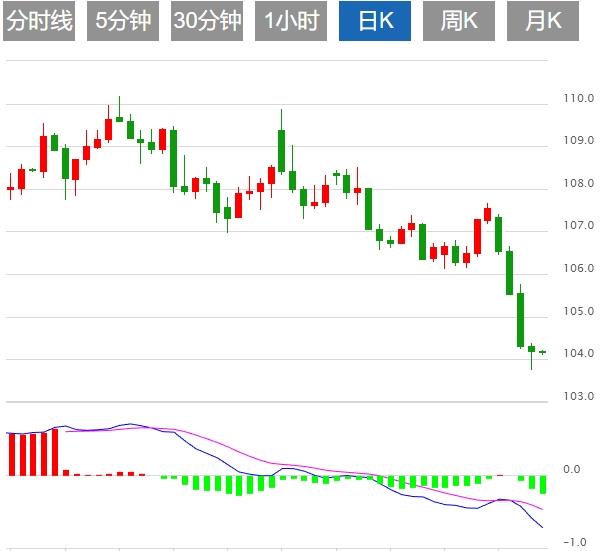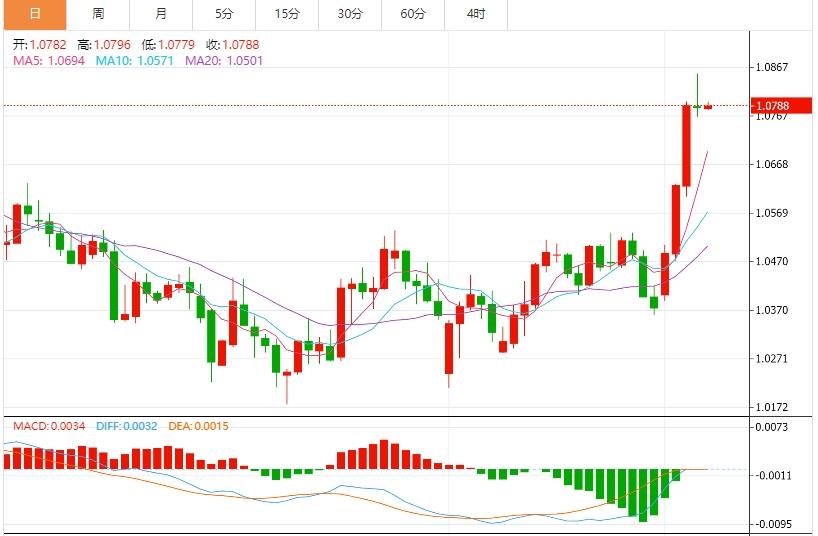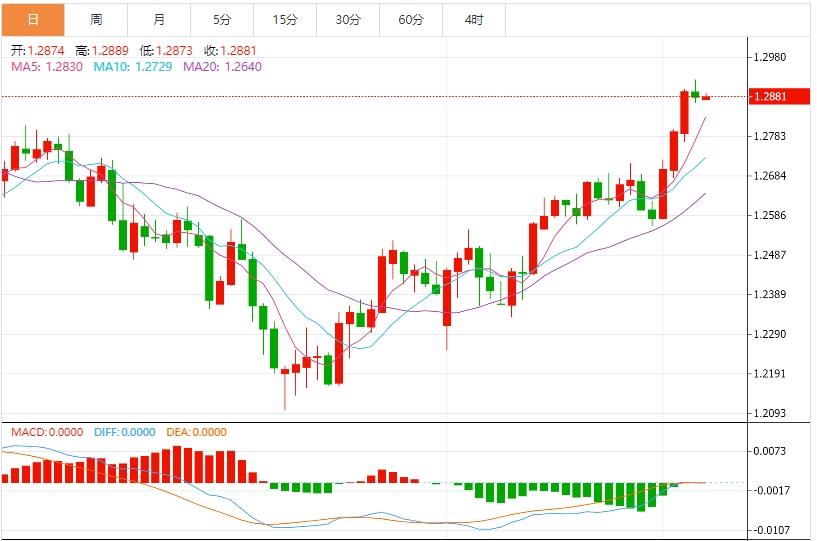Wonderful Introduction:
Green life is full of hope, beautiful fantasy, hope for the future, and the ideal of longing is the green of life. The road we are going tomorrow is green, just like the grass on the wilderness, releasing the vitality of life.
Hello everyone, today Avatrade Aihua Foreign Exchange will bring you "[Aihua Foreign Exchange Official Website]: The US dollar index hovers around 104, and the market is concerned about non-agricultural employment reports." Hope it will be helpful to you! The original content is as follows:
On the Asian session on Friday, the US dollar index hovered around 104, and the U.S. non-farm employment (NFP) will become more important as investors pay close attention to economic indicators. While the U.S. economy remains strong overall, the labor market is showing signs of weakness. In addition, a new wave of inflationary pressures, mainly due to concerns about tariffs, has suppressed growth forecasts.
Analysis of major currency trends
Dollar: As of press time, the US dollar index hovered around 104.17, and the US dollar index (DXY) continued its continuous decline on Thursday as new labor market and trade data put additional pressure on the US dollar. As investors begin to pay serious attention to economic data, the U.S. non-farm employment (NFP) will have new significance on Friday. Although the U.S. economy is generally in a healthy state, the labor market is beginning to show cracks. A new round of inflationary pressures, mainly due to tariff concerns, also hindered growth expectations. Technically, the US dollar index (DXY) remains under pressure, falling below key support levels. The 20-day and 100-day simple moving average (SMA) approached a bearish cross, strengthening the negative momentum. The relative strength index (RSI) and moving average convergence divergence (MACD) continue to bearish, indicating further downside risk. If DXY fails to find support around 103.00, the next key level to focus on is 102.50, which may mark the continuation of the current sell-off.



1. Crypto giants gathered tomorrow. Trump's new cryptocurrency policy is about to emerge.
Tomorrow, more than 20 executives, investors and well-known figures in the cryptocurrency field will gather at the White House cryptocurrency summit to plan the future development direction of the cryptocurrency field under Trump's leadership. People familiar with the matter said the event is likely to become a platform to promote a number of cryptocurrency-related administrative measures, and there are currently a variety of plans under consideration. Trump may announce that the administration will stop selling cryptocurrencies seized in criminal cases and instead use them to build state reserves, people familiar with the matter said. They also said Trump could issue an executive order to create a real Bitcoin reserve that is expected to buy more of this digital currency. Another potential proposal would involve tax handling issues in cryptocurrencies and would be very good, one of the people familiar with the matter said.It can be reviewed and approved by Congress. The people familiar with the matter said the actions are still under discussion and may not be implemented or change in the end.
2. Fed governor Waller believes there will be no rate cut this month
Fed governor Waller said at an event in New York that he does not think there will be a rate cut later this month, but said that the two easing of policy later this year remains the baseline situation. He said: "I want to see how the inflation data will be in February. I want to see how the tariff policy will be before deciding when to cut interest rates next time."
3. News said that the possibility of the ECB suspending interest rate cuts in April is increasing.
Four sources said that the ECB policymakers believe that once they have a clearer understanding of trade and fiscal policy, the possibility of suspending interest rate cuts at the next meeting and then cutting interest rates again is increasing. The ECB cut interest rates as scheduled on Thursday, but Governor Lagarde refused to repeat her past message that the direction of the interest rate cut was clear, which caused some confusion in the market. Sources interviewed after the meeting said they believe there is a clear possibility of a suspension of interest rate cuts in April. But they agreed that the ECB is unlikely to keep interest rates at 2.5%, and at least based on the information currently available, further interest rate cuts are necessary. Key variables include trade policy, and if the U.S. imposes tariffs on the EU, the likelihood of more rate cuts will increase, and it may even begin in April. On the other hand, EU retaliation will blur the situation and increase the risk of stagflation. Furthermore, if Germany advances its proposed military and infrastructure spending plans, it will increase economic growth and inflation, reducing the likelihood of interest rate cuts in April.
4. Von der Leyen: Europe is facing a "watershed moment"
European aihuaforex.commission President von der Leyen emphasized in Brussels on the 6th local time that the current is "watershed moment for Europe." Before attending the EU special summit on the same day, von der Leyen said: "Europe is facing an imminent threat, so it must have the ability to protect and defend itself. Our goal is to achieve peace by strengthening its strength." It is reported that von der Leyen will discuss with EU member leaders at this special summit the "rearming Europe" plan with a total investment of 800 billion euros. On the 4th, von der Leyen proposed the "rearming Europe" plan for the first time, which included providing EU member states with 150 billion euros loans for defense investment, and assisting member states in integrating needs and jointly purchasing military equipment to enhance European security. She also said the plan would enable member states to invest in Ukraine's defense industry or directly purchase military equipment to support Ukraine.
5. Lagarde: Increased spending on defense and infrastructure in Europe will boost the economy
European Central Bank President Lagarde said at a press conference that the increase in European defense and infrastructure spending may promote economic growth. “One thing that is clear on the Council’s desktop is that… (increasing spending) will generally support European growth and will drive the European economy,” Lagarde said. But she noted that the extent of the impact on the economy will depend on details, such as the place of purchase, time of time and financing of additional fiscal expenditures, which are political decisions and are not within the UEFA pursuant to the ECB. “It’s an ongoing work,” she added.
Institutional View
1. Institutions: The strong increase in Canadian exports is unlikely to continue due to the tariff blow.
Katherine Judge, senior economist at the capital markets of the Imperial aihuaforex.commercial Bank of Canada, said that Canada's exports may drop sharply due to the impact of US President Trump's tariffs, but for now, efforts ahead of these tariffs are driving stable trade flows. As efforts before Trump imposed tariffs on Canada boosted exports in January, Judge said it could also see more demand drive exports in February, as tariffs were delayed only 30 days at the time. Cars that aihuaforex.comply with the US-Mexico-Canada Agreement can now be exempted from tariffs for another month, but the lingering uncertainty is clearly detrimental to Canadian business investment. This will allow the Bank of Canada to continue to cut interest rates, with unemployment expected to rise to just above 7% in the aihuaforex.coming months.
2. Institutions: The ECB may be very close to neutral interest rates
Neil Mehta, an analyst at Royal Bank of Canada BlueBay Asset Management, said in a report that a key question facing investors is currently whether the ECB's interest rate is at or close to its terminal interest rate or "neutral" interest rate levels. Mehta said the statement still used the term “restrictive” (referring to monetary policy stance), although the wording has been downplayed, suggesting that the ECB is very close to neutral interest rates.
3. As interest rate spread narrows, the US dollar further weakens
As European Treasury yields rise to a level close to U.S. Treasury yields, the US dollar further falls. Concerns about global economic growth under trade restrictions have driven interest rate spreads to narrow. Germany's 10-year government bond yield rose to 2.89% from 2.47% two days ago. The largest economy in Europe has launched an ambitious plan to stimulate consumption. The ECB said it could slow down monetary easing if Germany's spending achieves expected results. By contrast, the Fed is now considered more likely to cut interest rates faster than before tariffs are imposed, and U.S. Treasury yields are falling.
The above content is all about "[Aihua Forex Official Website]: The US dollar index hovers around 104, and the market pays attention to the non-agricultural employment report". It is carefully aihuaforex.compiled and edited by Aihua Avatrade Forex editor. I hope it will be helpful to your trading! Thanks for the support!
Only the strong know how to fight; the weak are not qualified to fail, but are born to be conqueredof. Step up to learn the next article!















